Term of the Month: Self-portraitApril 01, 2024 The self-portrait in Western art is a compelling and multifaceted genre that has evolved over centuries, reflecting changes in artistic techniques, societal values, and the perception of the self. Its critical history is a narrative of self-representation, identity exploration, and the artist's relationship with their own image. And today, as the historian James Hall puts it, ‘(s)elf-portraiture has become the defining visual genre of our confessional age… (they) have migrated far beyond the church, palace, studio, academy, museum, gallery, plinth and frame. School children are required to make them, and now photographic selfies are ubiquitous. It is widely assumed—and hoped—that self-portraits give privileged access to the sitter’s soul, and thereby overcome the alienation and anonymity experienced by so many in modern urbanized societies.’ How did this genre originate and to what end did Indian modernists employ this genre in their interrogation of modern identity? |
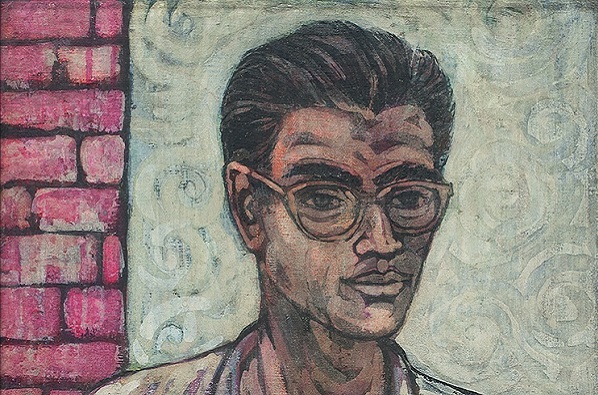
Jyoti Bhatt
Self Portrait (detail)
1952, Enamel, waterproof ink and ink on canvas board, 24.0 X 18.0 in.
Collection: DAG
|
‘One of the wonders of self-portraits is their capacity to induce unique levels of uncertainty in the viewer. Is the artist looking at us with a view to portraying or judging us? Is the artist looking at a mirror, with a view to portraying or judging themselves? Is the artist creating a persona to serve specific ends? Or have they delved into the book of memory, myth and imagination to create a work personal in its meaning?’ - James Hall |
|
|

Rembrandt
Self-Portrait with Raised Sabre
1634, Etching print and engraving on laid paper
Image courtesy: Wikimedia Commons
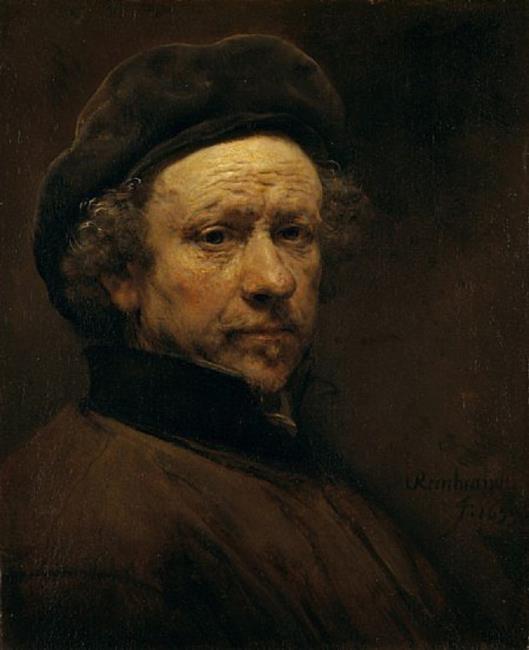
Rembrandt
Self-portrait
1659
Image courtesy: Wikimedia Commons
Originating in antiquity with examples such as the Faiyum mummy portraits from Roman Egypt, the self-portrait gained prominence during the Renaissance. Artists like Albrecht Dürer and Rembrandt van Rijn used self-portraiture not only as a means of self-expression but also to showcase their technical skill and social status. These early examples laid the groundwork for a tradition that would continue to flourish through the centuries. Rembrandt's self-portraits hold immense significance in the art world. These self-portraits, numbering over 80, are considered a visual diary of the artist's life, capturing his evolution over time. Kenneth Clark noted that Rembrandt, alongside Van Gogh, elevated self-portraiture to an autobiographical art form, turning it into a means of profound artistic self-expression. Rembrandt would also use the form of the self-portrait to introduce concepts of play into the process of identity-formation. In some of these images, he fashions himself as another—a leap of fantasy that was, at the same time, engineered by colonial trade and contact with the wider, non-European world and its cultures. His extensive exploration of self-portraiture has influenced artists across centuries and remains a testament to the ways in which self-expression ties up with self-making. |

Artemisia Gentileschi
Self-Portrait as Saint Catherine of Alexandria
1616, Oil on panel
Image courtesy: Wikimedia Commons

Élisabeth Louise Vigée Le Brun
Self-portrait
1791 , Oil on canvas
Image courtesy: Wikimedia Commons

Élisabeth Louise Vigée Le Brun
Self-Portrait with Her Daughter, Julie
1789, Oil on canvas
Image courtesy: Wikimedia Commons
During the Baroque period, artists such as Caravaggio and Artemisia Gentileschi imbued their self-portraits with dramatic lighting and emotional intensity, reflecting the tumultuous times in which they lived. The Enlightenment brought a shift towards introspection and individualism, leading artists like Jean-Siméon Chardin and Elisabeth Vigée Le Brun to explore their inner worlds through self-portraiture. In the case of Le Brun, her work occasionally focuses proudly on her professional status as an artist, as she paints herself working at her self-portrait, while in others she imparts a particularly personal and intimate touch, like when she paints herself with her daughter. Self-portraits that include a close family member or loved one expands one’s idea of the self, moving towards what the artist considered more important than exclusive, individualistic self-making; namely, fulfilling relationships with others. |
|
The nineteenth century saw the rise of Romanticism, with artists like Eugène Delacroix and Francisco Goya using self-portraiture to convey their personal struggles and existential angst. Meanwhile, the Realists, including Gustave Courbet and Édouard Manet, depicted themselves with unflinching honesty, challenging conventional notions of beauty and propriety. |
|
|

Frida Kahlo
Self-Portrait with Thorn Necklace and Hummingbird
1940
Image courtesy
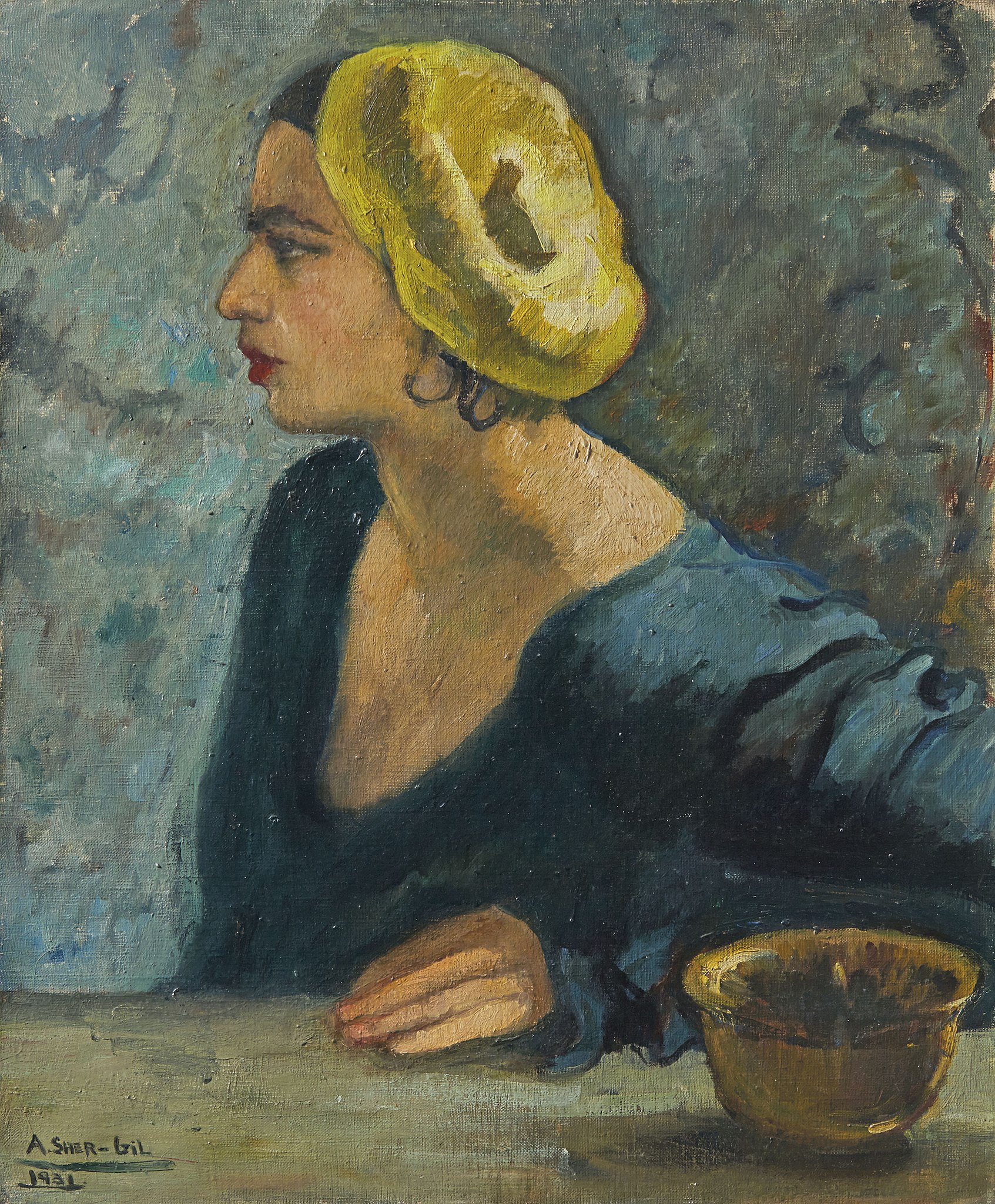
Amrita Sher-Gil
Self-portrait
Image courtesy: Wikimedia Commons
The modern era witnessed a proliferation of self-portraiture, with artists such as Vincent van Gogh and Frida Kahlo using the genre to explore themes of identity, isolation, and mental health. In the case of Kahlo or Amrita Shergil, emphasis would be laid once again on the artist’s perception of their own bodies—in conflict with the patriarchal expectations of the modern age. Distinct cultural motifs and symbols, drawn from myths and anti-colonial narratives, would find their way into their self-images. An enduring theme would concern their own alienation from the normative life guaranteed to those who conformed to their social image of themselves. Kahlo would say, ‘I paint self-portraits because I am so often alone, because I am the person I know best’. The advent of photography further expanded the possibilities of self-representation, allowing artists like Cindy Sherman and Nan Goldin to experiment with identity and gender roles. |
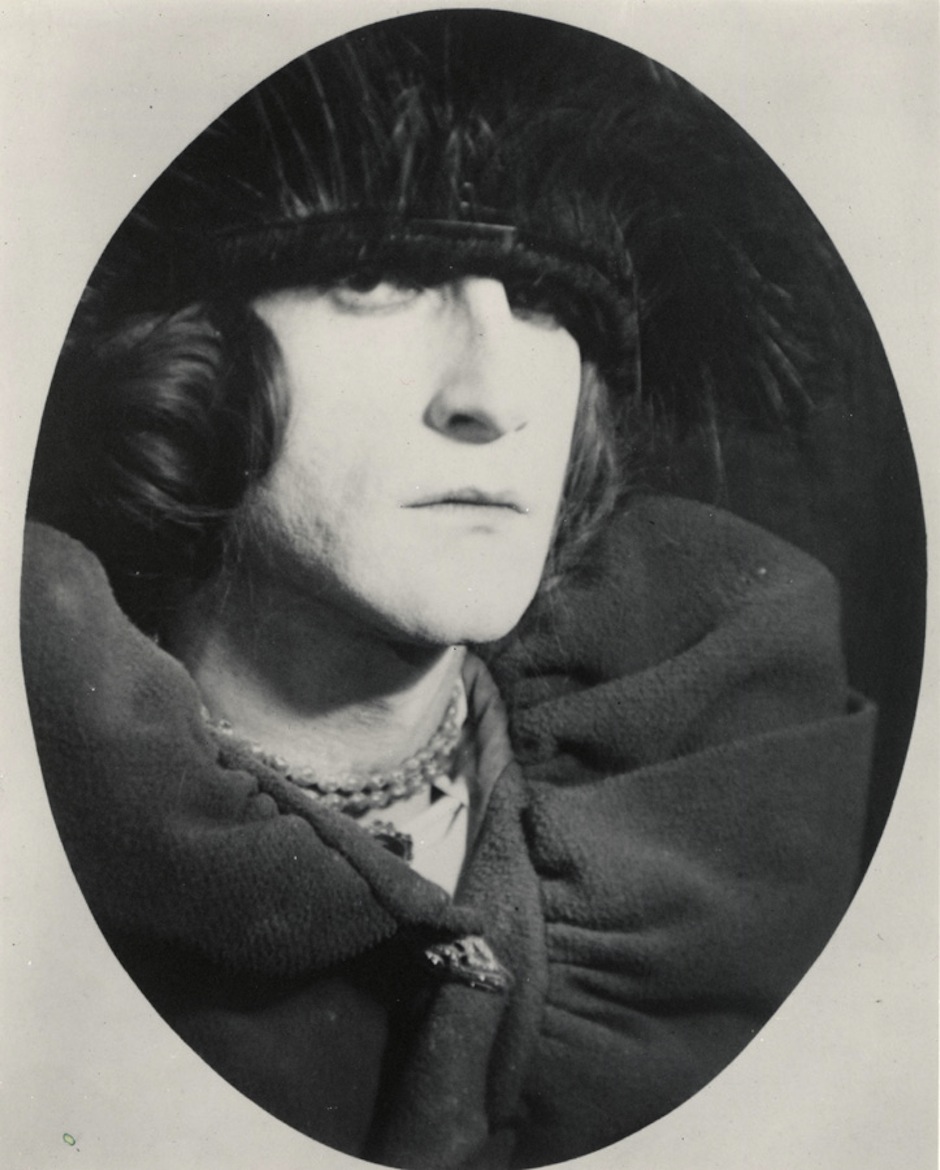
Man Ray
Portrait of Rrose Sélavy
1921
Image courtesy: Wikimedia Commons
In the twentieth century, the self-portrait became increasingly conceptual, with artists like Marcel Duchamp and Andy Warhol using it as a tool for social commentary and self-mythologizing, as Duchamp fashioned himself a new, sexually indeterminate, identity as Rrose Sélavy (suggesting a French pun on ‘eros, c’est la vie’: that is, ‘love (or, sex), it is life’. He complicates the notion of a gendered artistic self and the concept of authorship as a reliable guide towards authentic realisation of the self. The digital age brought new possibilities for self-portraiture, with artists like Ai Weiwei and Amalia Ulman using social media platforms to explore issues of surveillance, authenticity, and the construction of identity in the digital age. However, it also raised questions about the authenticity and accessibility of the self-portrait in an era of mass reproduction and image manipulation. |
|
The self-portrait in Indian modern art serves as a fascinating window into the evolving identities and artistic expressions of Indian artists in the twentieth century. The trajectory of self-portraiture in Indian modern art takes in various questions exploring how artists navigated themes of identity, nationalism, and individualism within the context of colonialism, independence, and globalization. |
|
|
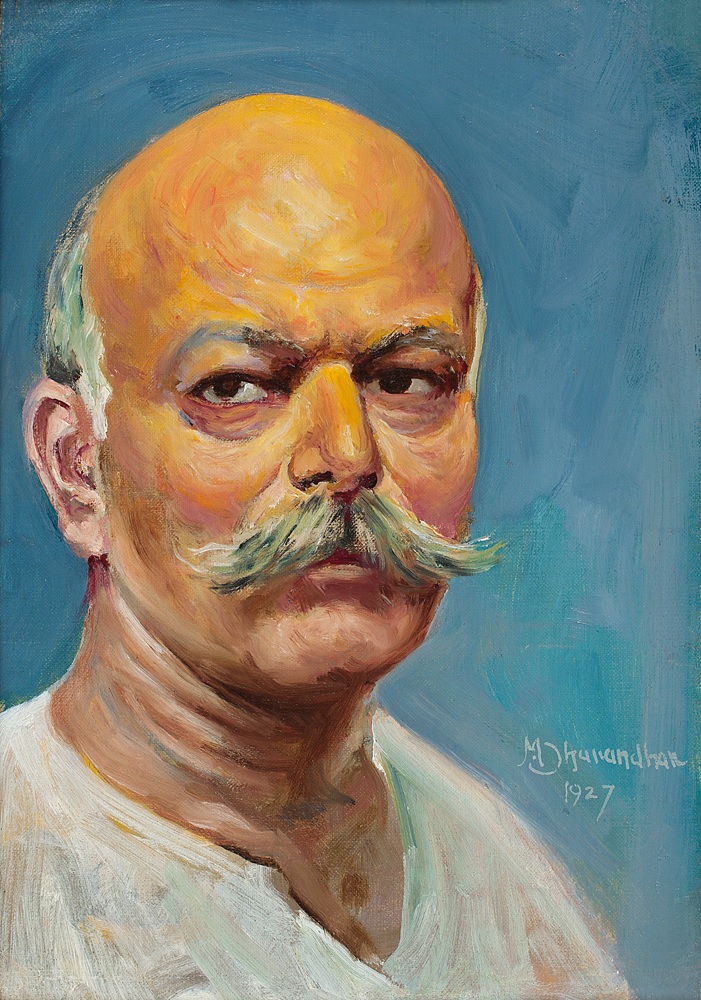
M. V. Dhurandhar
Self Portrait
1927, Oil on canvas, 14.7 X 10.2 in.
Collection: DAG
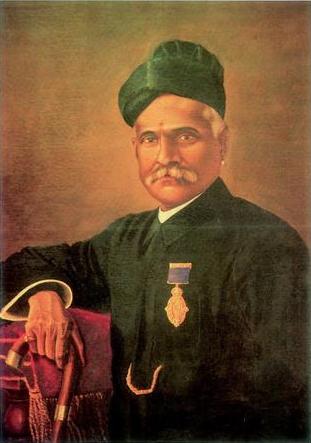
Raja Ravi Varma
Self-portrait
Image courtesy: Wikimedia Commons

Abanindranath Tagore
Idealized Self Portrait
Image courtesy: Wikimedia Commons
The early twentieth century witnessed a burgeoning interest in self-portraiture among Indian artists who were grappling with questions of identity and cultural heritage in the wake of colonial rule. Artists like Raja Ravi Varma, often hailed as the pioneer of modern Indian art, experimented with self-portraiture as a means of asserting their artistic independence and challenging European artistic conventions. Varma's self-portraits, characterized by meticulous attention to detail and a keen sense of realism, reflected his desire to establish a distinct Indian aesthetic that drew from indigenous traditions. For a successful academic realist like M. V. Dhurandhar, the self-portrait offered a chance to explore their own growth over time. On the other hand, Abanindranath Tagore, who balanced his academic training with large helpings of playfulness and experimentalism, took to the art of self-portraiture like a game: responding to the more ludic variations used by western artists from Rembrandt to Duchamp. |
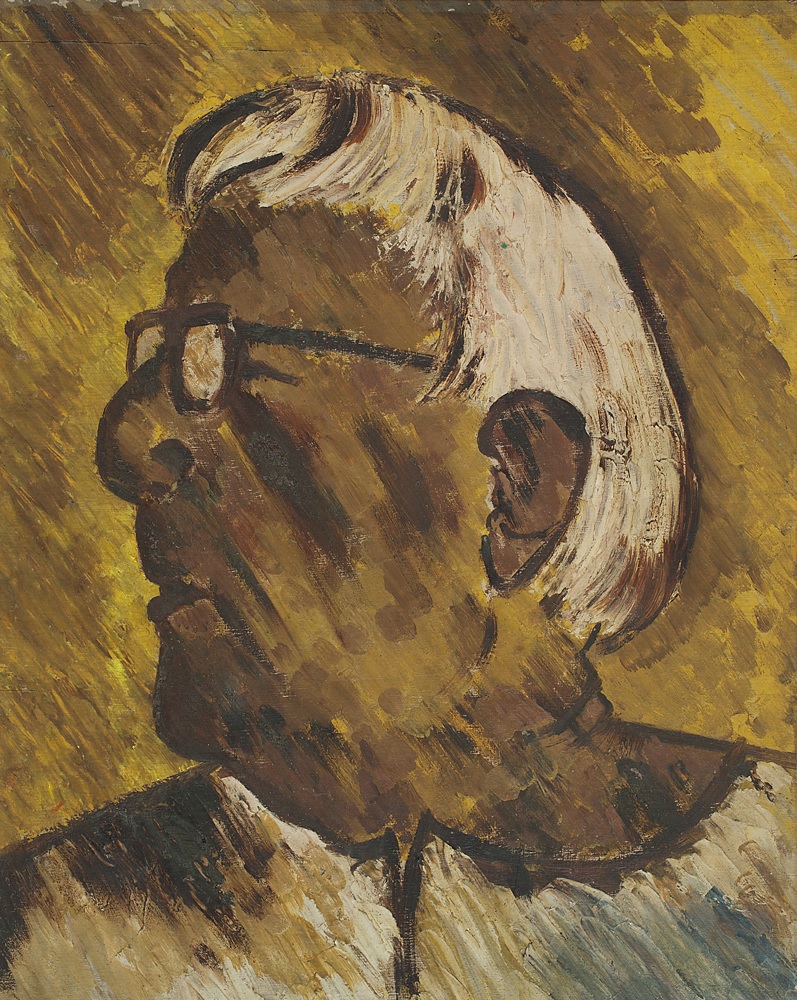
Jamini Roy
Untitled (Self Portrait)
Oil on plywood, 20.0 X 15.7 in.
Collection: DAG
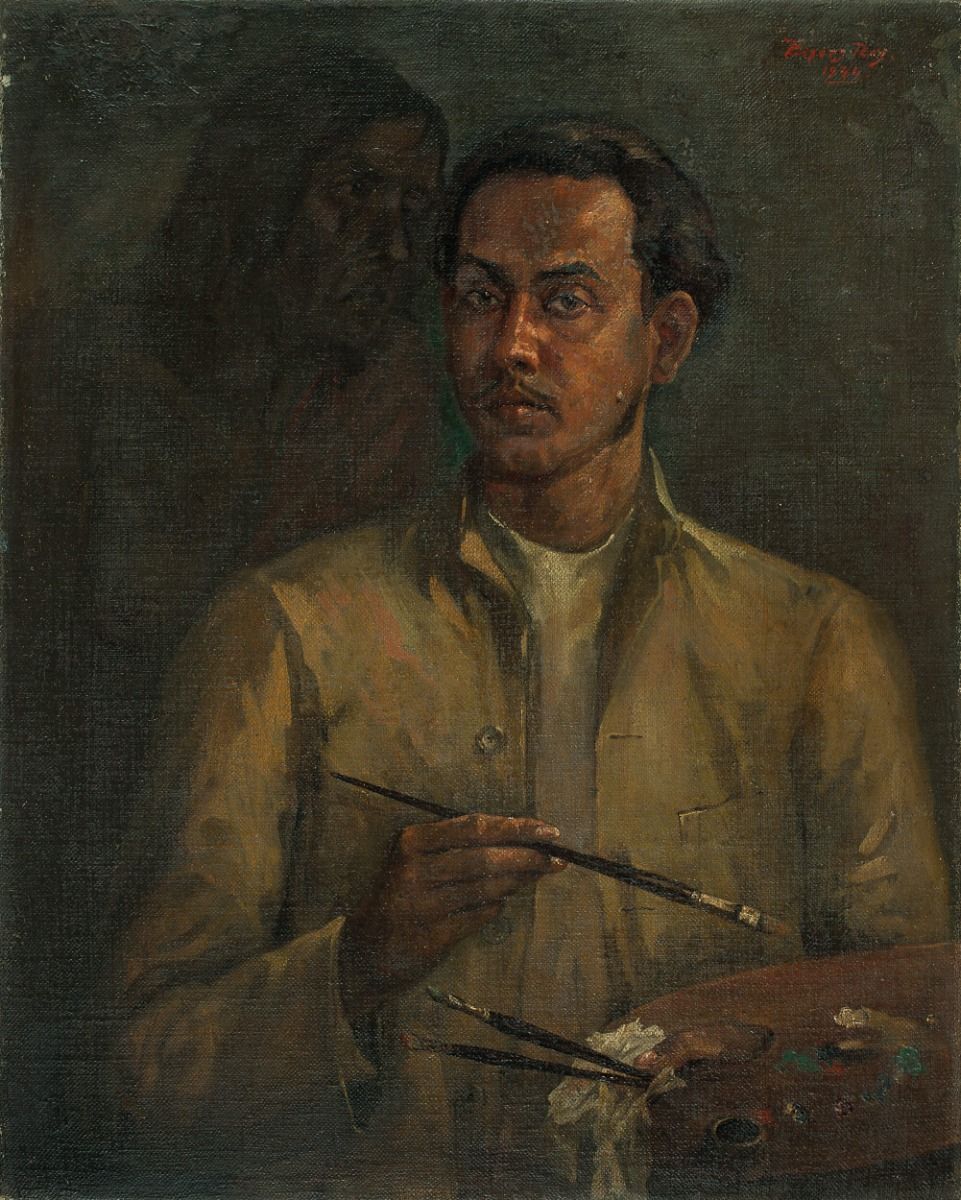
Kisory Roy
Art and Famine (Self portrait)
1944, Oil on canvas, 30.0 x 24.0 in.
Collection: DAG
As India's struggle for independence gained momentum, self-portraiture became a powerful tool for articulating nationalist sentiments and asserting cultural pride. Artists such as Nandalal Bose and Jamini Roy depicted themselves in a manner that celebrated India's rich artistic heritage and highlighted the importance of indigenous artistic traditions. Through their self-portraits, these artists sought to reclaim and reaffirm the significance of Indian art within a global context. At a conceptual level, Kisory Roy’s painting marks a turn in the social history of portrait-making, especially self-portraiture, in India. Given the erstwhile, colonial context, of an academic art school training, portraiture was one of the most lucrative career routes available to young graduates, as patrons wanted to imbibe the aura of being painted by a major portraitist (especially if the artists were British or European). Roy’s work, on the other hand, critiques the political relevance of such a genre, especially when artists were confronted with a dire historical situation, when colonial rule was increasingly impoverishing the countryside. At such a moment of crisis, Roy’s work asks, should artists be narcissistic by focusing on their own faces or those of other members of the callous social elite, or should they depict the sufferings of the masses? |
|
|
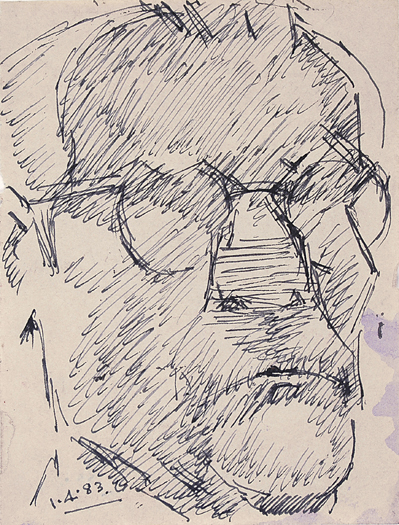
Gobardhan Ash
Self Portrait
1983, 5.0 X 4.0 in.
Collection: DAG
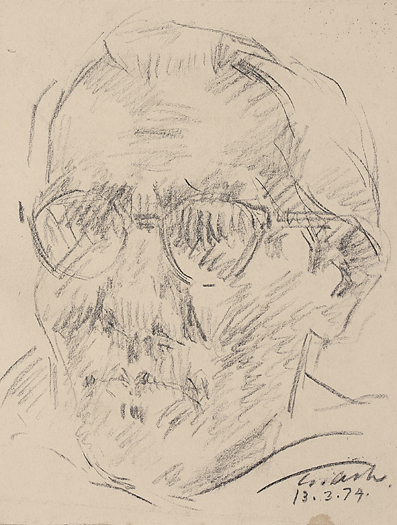
Gobardhan Ash
Self Portrait
1974, 8.5 X 6.5 in.
Collection: DAG
Gobardhan Ash, a prominent figure in Indian modern art, left behind a significant body of work that includes introspective and evocative self-portraits. Born in 1937 in West Bengal, Ash emerged as a leading artist during a period of immense social and cultural change in India. His self-portraits offer a profound glimpse into his psyche, reflecting his personal journey as an artist and his engagement with broader socio-political issues. Through bold brushwork and expressive gestures, he captures the nuances of his own inner world, inviting viewers to contemplate themes of identity, isolation, and self-discovery. Unlike traditional self-portraits that aim for a faithful likeness, Ash's self-portraits often veer towards abstraction, conveying a sense of emotional intensity and existential angst. |
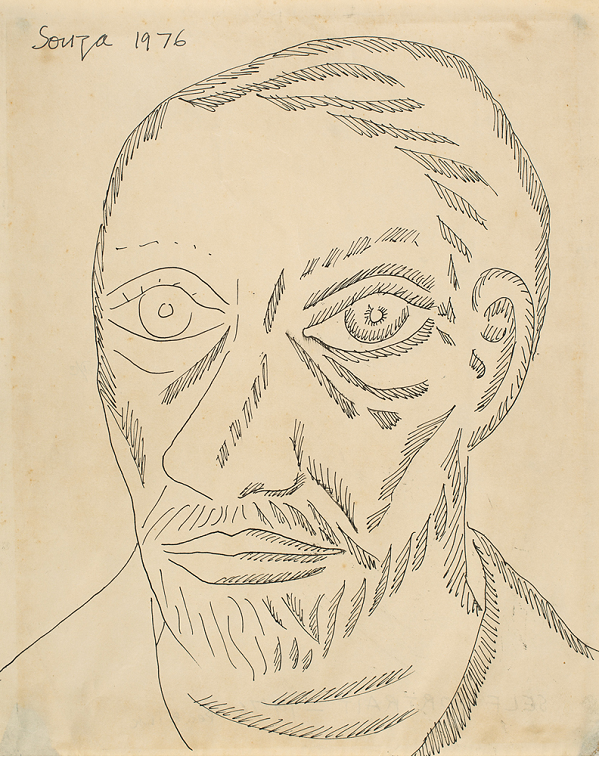
F. N. Souza
Self Portrait
1976, Ink on paper, 10.7 X 8.7 in.
Collection: DAG
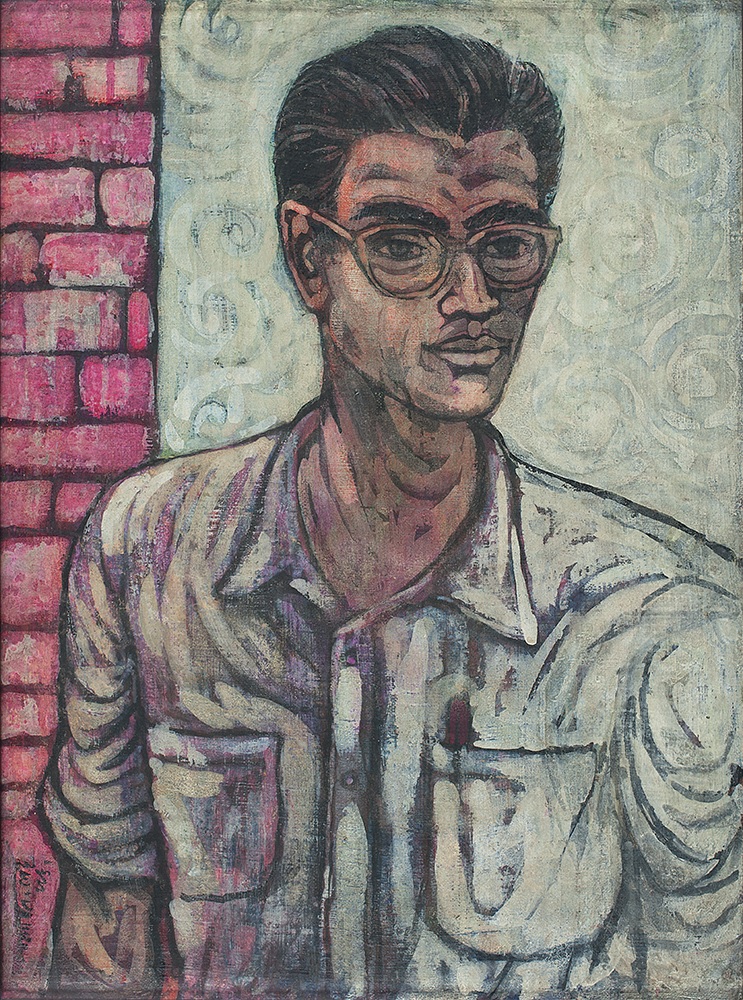
Jyoti Bhatt
Self portrait
1952, Enamel, waterproof ink and ink on canvas board, 24.0 X 18.0 in.
Collection: DAG
The post-independence period saw a proliferation of self-portraiture as Indian artists grappled with the complexities of modernity and globalization. Artists like M.F. Husain and F.N. Souza embraced self-portraiture as a means of exploring their own identities in the rapidly changing socio-political landscape of post-colonial India. Husain's self-portraits, characterized by bold brushwork and dynamic compositions, reflect his role as a cultural icon and a witness to India's tumultuous journey towards modernity. Other significant artists like Jyoti Bhatt also made self-portraits that offered a view into the parallel evolutions of their style as well as their bodies and personalities. |
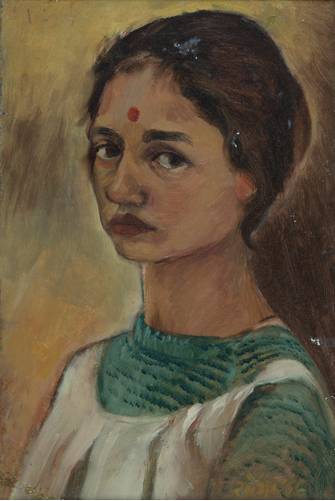
Shobha Broota
Untitled (Self Portrait)
1966, 18.0 X 12.0 in.
Collection: DAG
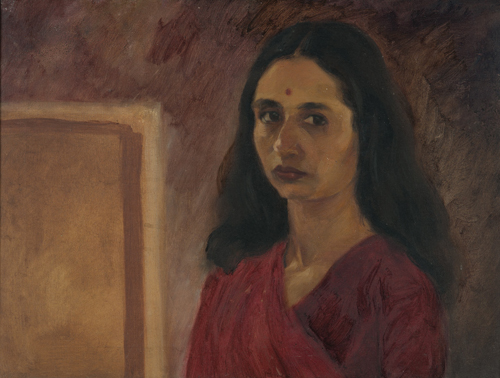
Shobha Broota
Untitled (Self Portrait)
1967, 18.0 X 24.0 in.
Collection: DAG
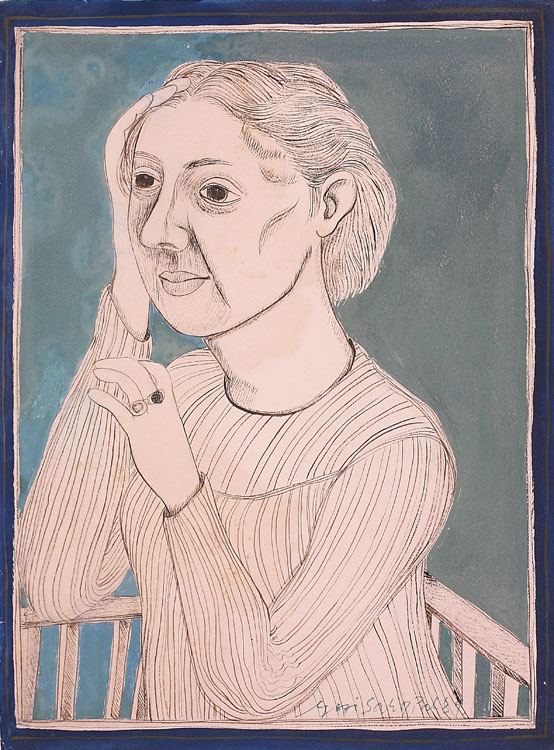
Gogi Saroj Pal
Self Portrait
1989, 13.2 X 9.5 in.
Collection: DAG
In the latter half of the twentieth century, self-portraiture in Indian art underwent a radical transformation as artists began to explore themes of identity, gender, and sexuality with greater nuance and complexity. Artists such as Bhupen Khakhar, Anupam Sud, Shobha Broota and Gogi Saroj Pal used self-portraiture as a means of expressing their personal experiences and grappling with issues of social marginalization and cultural hybridity. Their self-portraits challenge traditional notions of identity and offer a more inclusive and expansive vision of Indian modernity. For the women artists, the self-portraits offered an account of their changing relationships with their own bodies. While some emphasised their right to look at their own bodies and paint them as they saw it, others found ways to be self-reflexive about the damaging gaze society inflicts on the normative female body. |
|
The history of the self-portrait in Indian modern art reflects the diverse and evolving nature of Indian identity and artistic expression. From its roots in colonial resistance to its contemporary manifestations in the global art world, self-portraiture remains a powerful means of exploring the complexities of selfhood and belonging in a rapidly changing world. It also allows artists to continue questioning the properties that go into the construction of a self, whose historical roots vary not just across the world, but also across regions within such a complex country like India. In our ongoing search to fix our own image, these artistic explorations serve as a spectrum of guides: from the earnest and constructive, to the playful and disruptive, each seeking to impress its own conception of an amorphous self in the making. |
|
|


